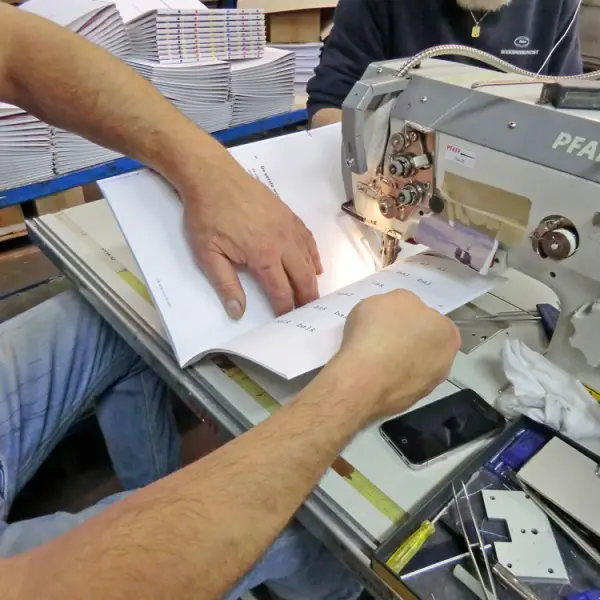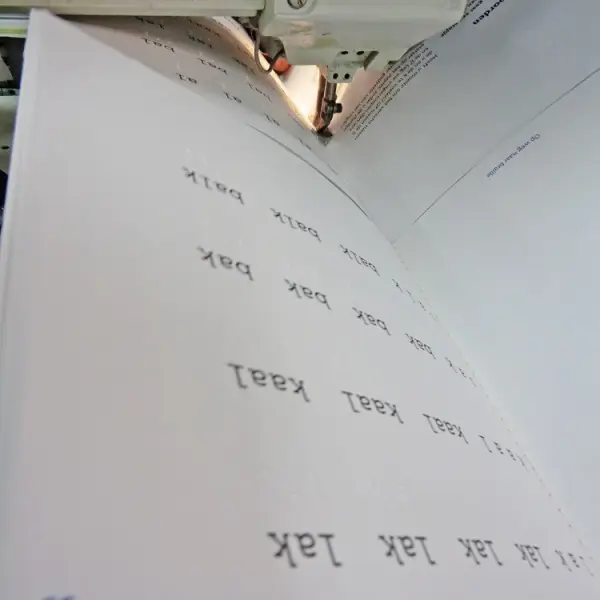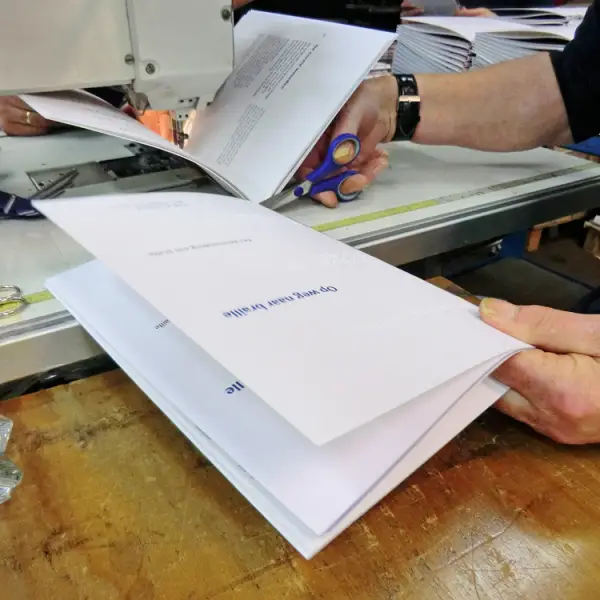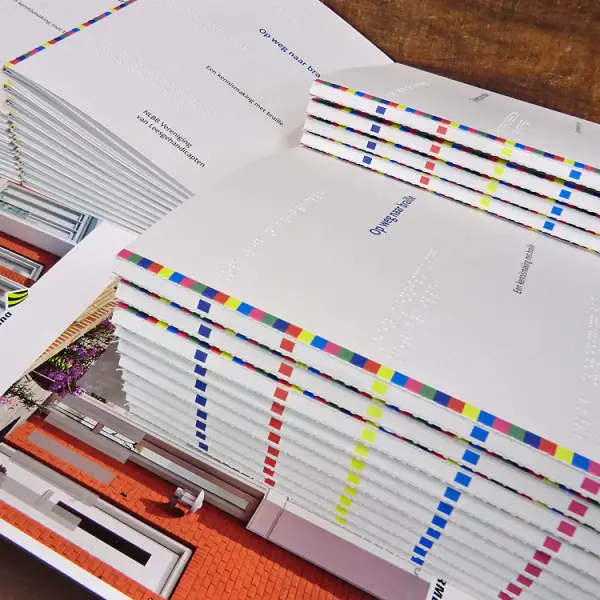Designing ‘An Introduction to Braille’
Binding Braille
Using any form of mechanical binding for the book would not have been advisable simply because of the braille (the raised dots would be damaged by mechanical pressure). This meant that the book had to be largely hand bound, a process which requires more precision, care and time. In consultation with the binder and printer I investigated various options and tested these by making models; I was very fortunate to work with such skilled bookbinders.
Ultimately, I chose Singer Sewn binding in combination with a double spine: a beautifully unique, durable and functional solution which is also very tactile. I could possibly have chosen a cheaper form of binding, for instance a Wire-O, but this is often used for manuals and I didn’t want this association; I wanted to bind the braille pages as a book. Furthermore, it was a good opportunity to show that there are more ways binding braille than the standard use of staples or Wire-O. To begin with Part 1 was sewn into the first spine, at the front. Consequently Part 2 was sewn into the second spine, at the back. This section opens beautifully flat, making it easy to feel the dots.
Each book was bound by a team of three people: one for folding and gathering, one for the actual stitching of the pages and one to collect the books, cut the yarn and set to aside for further finishing. In this way, approximately sixty books per hour were bound by a total of six hands.
During the process of binding
-

Singer sewn binding, Patist.
-

Singer sewn binding, Patist.
-

Singer sewn binding, cutting thread, Patist.
-

After binding, books set aside for further finishing, Patist.
Transportation
Together with the braille printer, the binder and the Central Book House I looked into the best way of transporting the books. Eventually it was decided to seal each book individually before standing upright in boxes, ready for transport.The books couldn’t be stacked because of the braille. Sealing the books ensured that the white cover would remain clean and at the same time also protect the braille from damage through friction. It was recommended to send single copies in a reinforced box.
Standard Methods for Braille Production
Braille books are generally printed on 120–140 grams office paper using a special braille printer (it makes a lot of noise) and then, depending on the number of pages, staple bound (saddle stitch) in smaller sections. The result is generally fine, but on occasion too many pages are bound making them user-unfriendly: if the sections are too bulky they stand open making it harder to read the braille. Certainly for young or inexperienced braille readers, the pages need to lie flat. The CBB (Christian Library for the Blind and Visually Impaired here in the Netherlands) have developed their own production line to cater for printing large quantities of braille, for instance for newsletters or reading books.
Wire-O or spiral binding is often used for educational purposes, such as textbooks in braille or reading books for young braille readers. An understandable choice: the braille pages lie flat when open, it browses easily, is flexible, durable, easy to do and moreover it’s relatively cheap. This method of binding is sometimes combined with a cover (often plastic) and a cardboard back cover. Plastic can be embossed easily with braille; this is a durable and relatively cheap option.
I am convinced that good design can play a significant role in relaying information or communicating an idea, especially for people with a visual impairment.
Many braille readers indicate that they have a preference for paper rather than plastic. Unfortunately, all too often, little account is taken of the wishes and preferences of braille readers. This is probably partly due to budget constraints, however I think there is also a lack of creativity and knowledge of graphic techniques. Braille is generally ‘produced’ as opposed to being incorporated into a design. I am convinced that good design can play a significant role in relaying information or communicating an idea, especially for people with a visual impairment. On a positive note, I see that educational organizations and commercial companies are working hard to develop all kinds of innovative digital applications.
